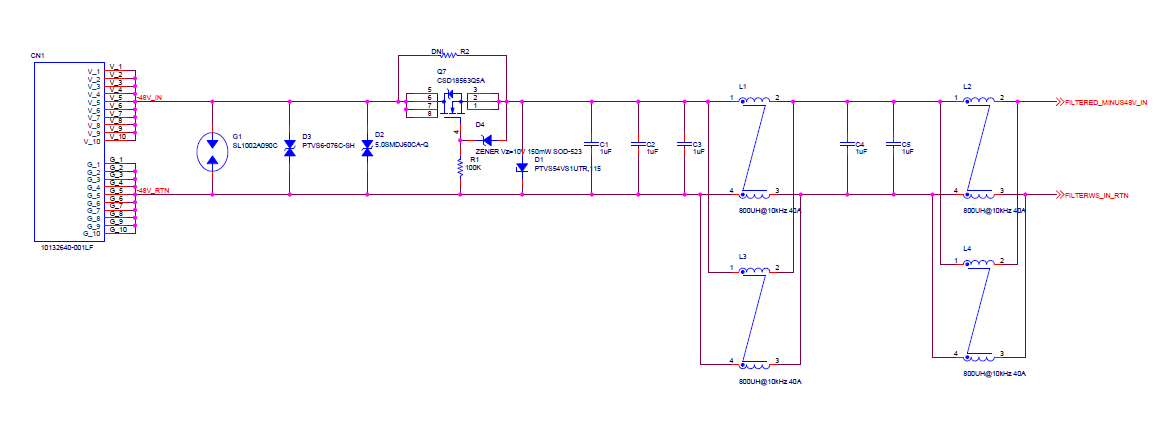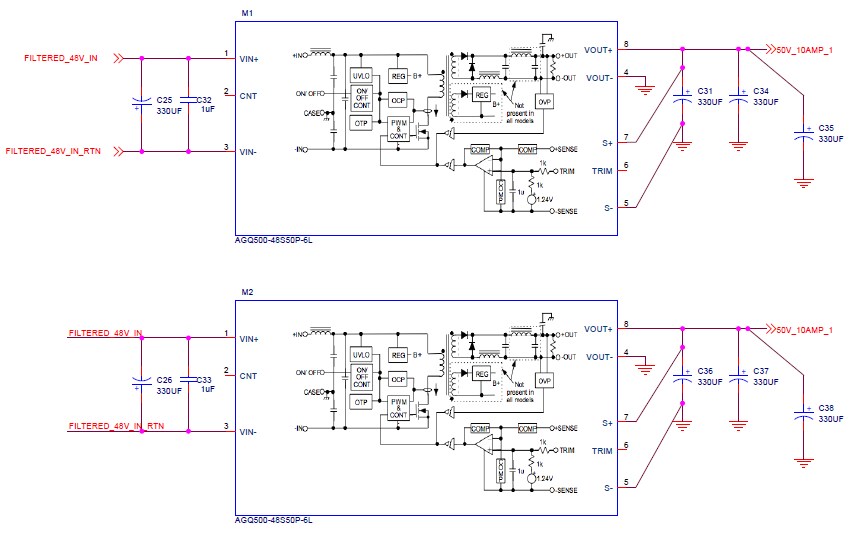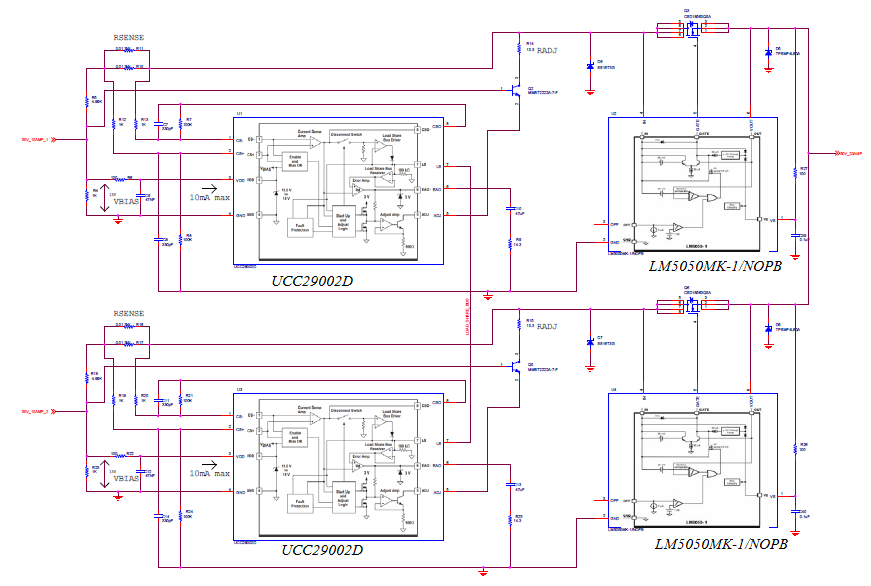Other Parts Discussed in Thread: CSD18563Q5A, , UCC29002
Dear Sir / Madam,
We are looking to use TI's UC29002 and LM5050 to build a current sharing controller to ensure that current is evenly divided and combined into a single rail. I have drawn up a schematic to show to two sets of Artesyn 50V 10A power source being used with UC2002 and LM5050 for current sharing, I might probably add more path to merge into a 50V 30A rail (below only two merging paths are shown).
I may have a version with five 6A sources using these parts to merge into a 50V 30A rail.
I appreciate if someone could review this and let me know their comments and also would this work as a current sharing solution.
Thanking you for your kind assistance.
Rajesh





